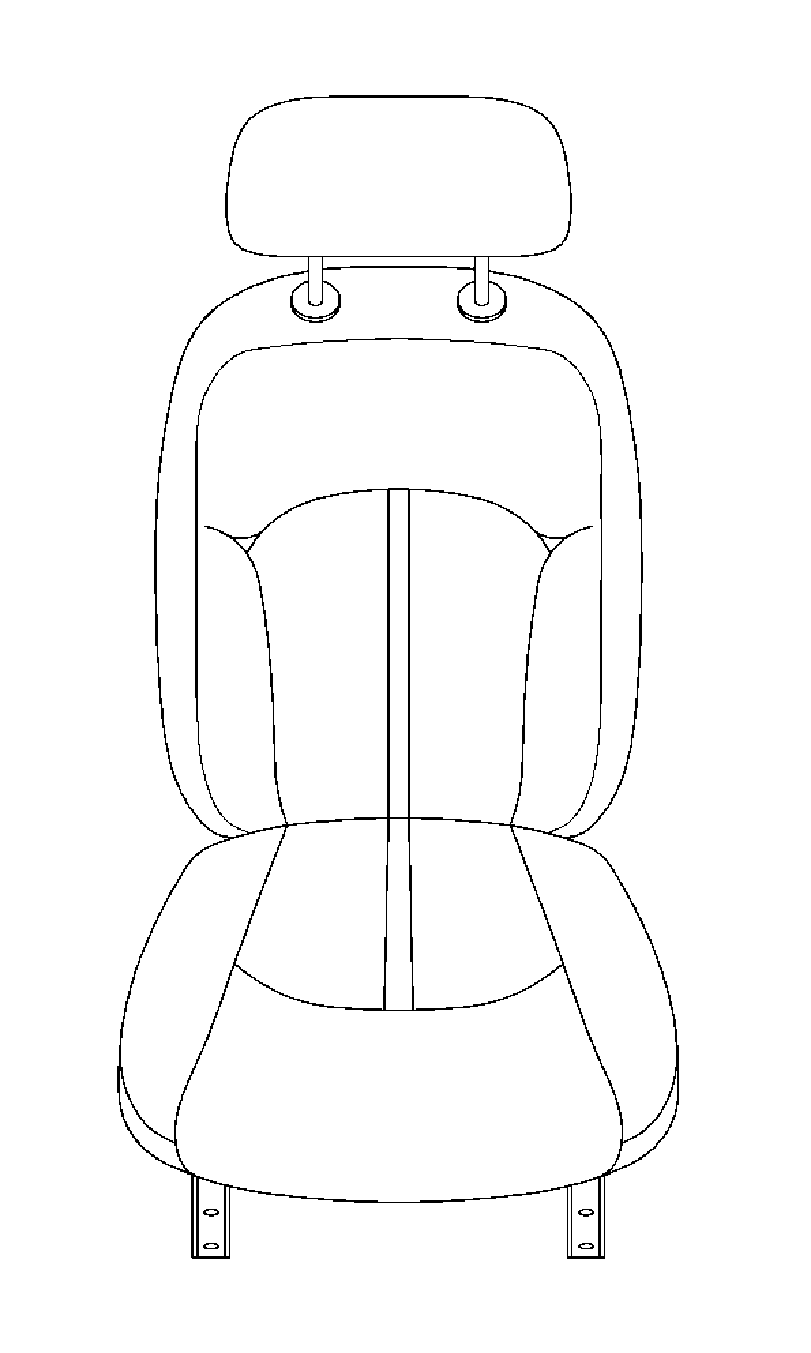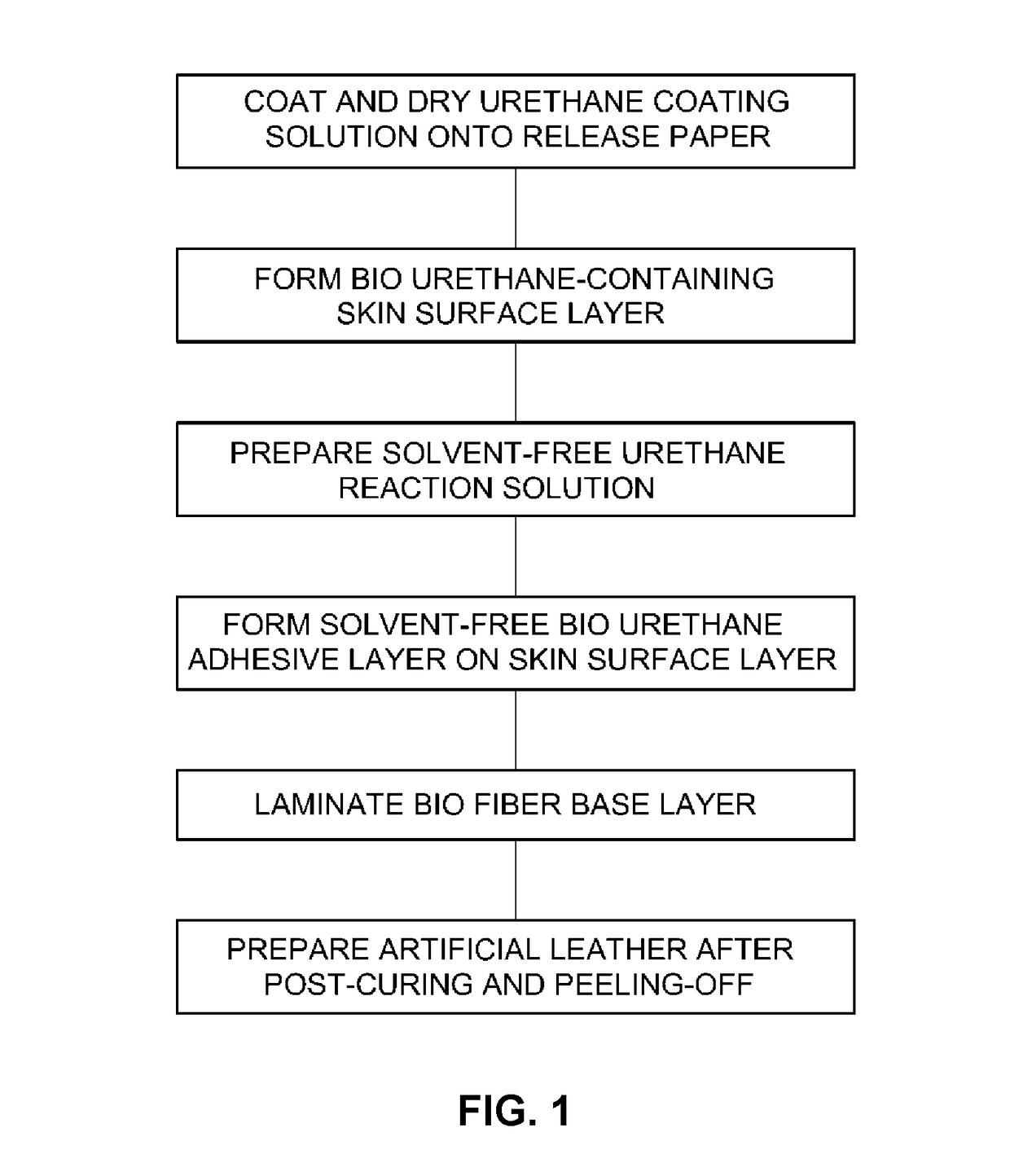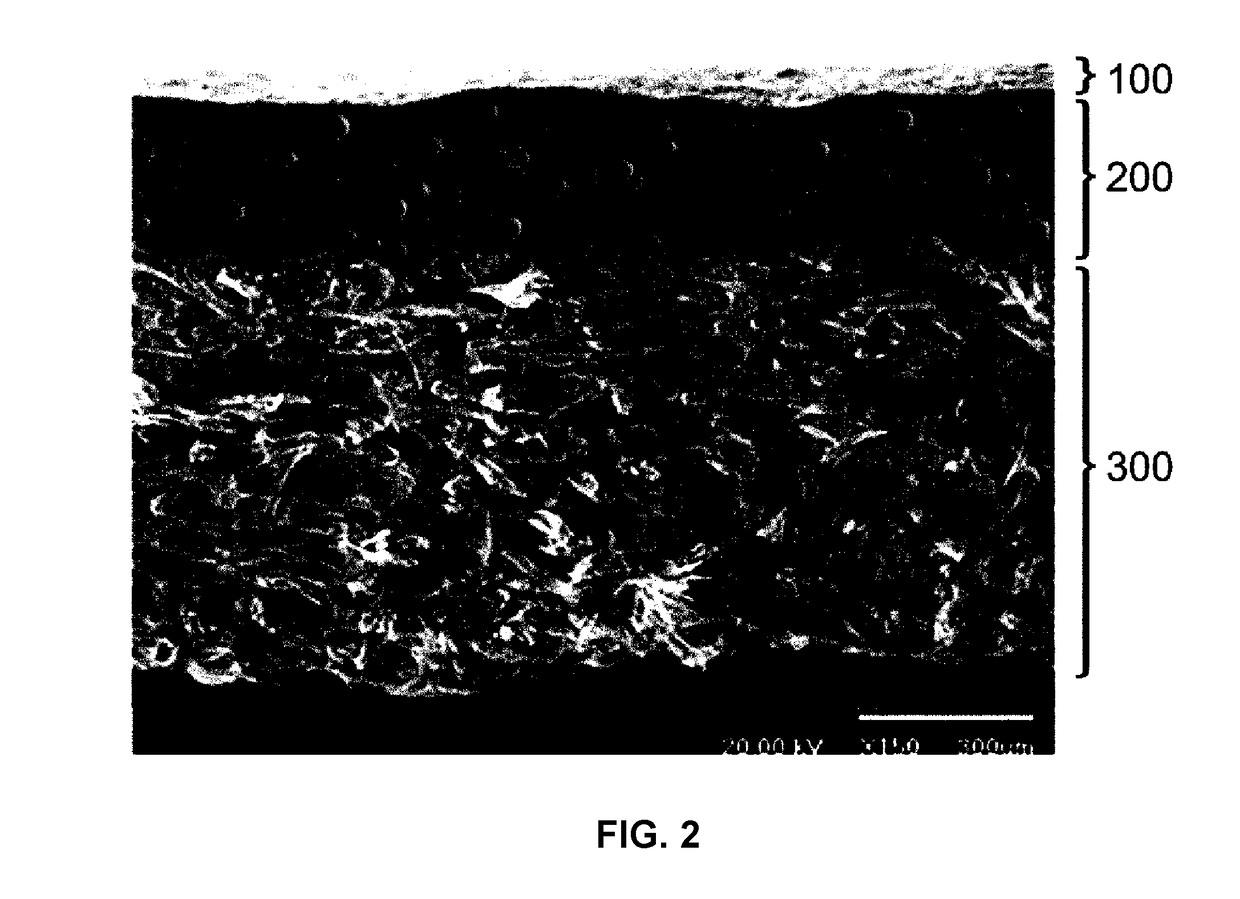Eco-friendly artificial leather for interior of automobile and manufacturing method thereof
a technology of eco-friendly artificial leather and automobile interior, which is applied in the direction of synthetic resin layered products, adhesive types, transportation and packaging, etc., can solve the problems of reduced amount, difficult to fully remove residual organic solvent, and difficult to actively conform to international environmental regulations, so as to reduce the use of organic solvents
- Summary
- Abstract
- Description
- Claims
- Application Information
AI Technical Summary
Benefits of technology
Problems solved by technology
Method used
Image
Examples
synthesis example 1
[0066]70 wt % of a carbonate polyol having a number average molecular weight of 2,000 (Ube Industries, Ltd., UH-200), 26 wt % of a biomass-derived crystalline ester polyol (a number average molecular weight of 2,000, Songwon Chemical Co., Ltd., SS-236), and 4 wt % of bio 1,3 propanediol (Susterra, DuPont Tate & Lyle Bio Products) were disposed into a reactor, and the resulting mixture was uniformly mixed at 70° C. to 80° C. for 30 minutes. After the reactor was cooled to a temperature of approximately 65° C. in consideration of an exothermic reaction, 4.5 parts by weight of 4,4-diphenylmethane diisocyanate (MDI, trade name: Cosmonate, product manufactured by Kumho Mitsui Chemicals Corp.) was added to 100 parts by weight of the polyol mixture, and then the resulting mixture was reacted for approximately 3 hours to obtain a hydroxyl group end prepolymer-1 (an OH group content of 2.67 wt %).
synthesis example 2
[0067]A polyol mixture was prepared under the same conditions as in Synthesis Example 2, and the reactor was cooled to a temperature of approximately 60° C. in consideration of an exothermic reaction. Thereafter, 3 parts by weight of 4,4-diphenylmethane diisocyanate (MDI, trade name: Cosmonate, product manufactured by Kumho Mitsui Chemicals Corp.) was added to 100 parts by weight of the polyol mixture, and then the resulting mixture was reacted for approximately 3 hours to obtain a hydroxyl group end prepolymer-1 (an OH group content of 2.9 wt %).
synthesis example 3
[0068]A hydroxyl group end prepolymer-3 (an OH group content of 2.7 wt %) was obtained by reaction in the same manner as in Synthesis Example 1, except that isocyanate was changed into dicyclohexyl methane diisocyanate (H12MDI).
[0069]Preparation of Solvent-Free Urethane-Type Adhesive Film
PUM
| Property | Measurement | Unit |
|---|---|---|
| diameter | aaaaa | aaaaa |
| temperature | aaaaa | aaaaa |
| temperature | aaaaa | aaaaa |
Abstract
Description
Claims
Application Information
 Login to View More
Login to View More - R&D
- Intellectual Property
- Life Sciences
- Materials
- Tech Scout
- Unparalleled Data Quality
- Higher Quality Content
- 60% Fewer Hallucinations
Browse by: Latest US Patents, China's latest patents, Technical Efficacy Thesaurus, Application Domain, Technology Topic, Popular Technical Reports.
© 2025 PatSnap. All rights reserved.Legal|Privacy policy|Modern Slavery Act Transparency Statement|Sitemap|About US| Contact US: help@patsnap.com



